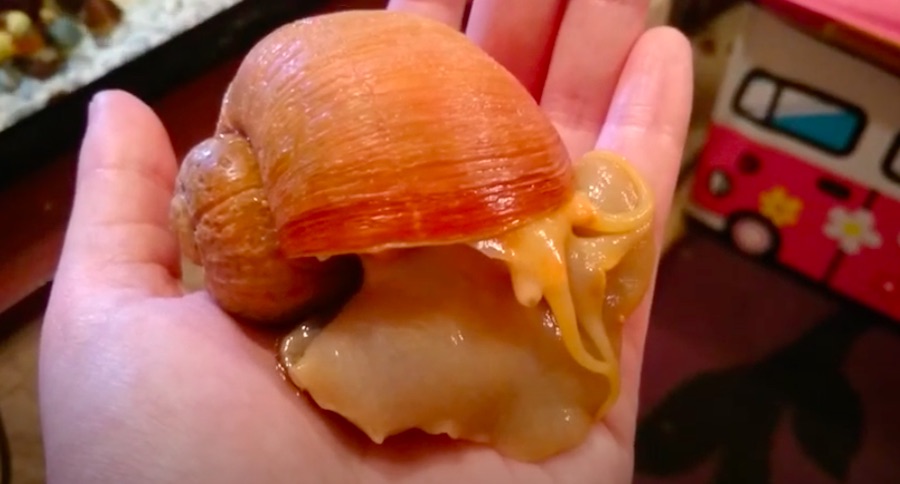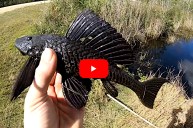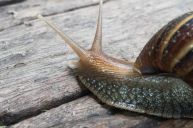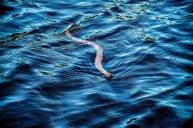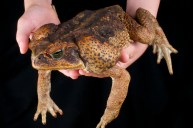Here's the pertinent info on the giant apple snail, where you can find it, and why it matters.
Giant apple snails were a part of the aquarium trade brought to the United States from their native home in South America, particularly to Texas, and now they're causing problems in the Lone Star State and beyond.
Residents and members of the Texas Parks & Wildlife Department (TPWD) are now asking anyone who sights them or their pink egg clusters to report the invasive species to authorities.
It's not enough that these non-native snails can wreak havoc on local aquatic vegetation, but they are specifically known to carry the rat lungworm parasite that can and will infect human beings.
According to Texas Invasives, "These snails are one of many species that may have been spread as the result of flooding associated with Hurricane Harvey in late summer of 2017."
Since that time the TPWD and the Texas Invasives Organization have been trying to get the word out to people in an effort to raise awareness of the problem. Or, as TIO says, "Hello invasive species. Goodbye Texas."
Giant Apple Snail Description
Giant apple snails can reach sizes of up to six inches long or more. They are generally a yellow to brownish black color with or without dark spiral bands on their shell.
Maybe the easiest way to identify these creatures is by first noticing what they leave behind: bright pink egg masses that indicate they've already been there and reproduced. Giant apple snail eggs will cling to debris, dock pilings, and aquatic vegetation while they mature and then hatch.
Giant apple snails do not care much for saltwater or colder temperatures, preferring freshwater and the warmth of most Texas waterways. The invasive apple snail has been confused at times with the channeled apple snail, which is nearly identical in appearance.
Reason to Worry
Although we began talking about Texas, this mollusk has now spread itself around the United States, and according to TIO has now established populations in Alabama, Arizona, California, Florida, Georgia, North Carolina, South Carolina, and Virginia, including Louisiana and Hawaii.
"Apple snails are voracious herbivores and feed on a wide variety of both native and introduced submerged, floating, and emergent aquatic plants. These invasive snails reproduce prolifically and can attain high population density, decimating the aquatic vegetation."
Invasive apple snails (Pomacea maculata) have caused significant damage to rice crops in Asia and the potential is the same in areas where rice production and the snails both occur. Although this same damage has not yet been seen in Texas, some rice farmers have experienced an increased need in maintaining their levees due to the constant burrowing by the snails.
What Can Be Done About Giant Apple Snails
One thing that experts agree on is that when egg masses are found, they should be removed and crushed. Merely trying to drown them is not an option. As with many invasive species in the United States, the cost of destroying the invader is nothing compared to letting them coexist with native species. They often out-compete others for food and cover, making them real nuisances.
Still, the treatments for apple snails are quite limited. Chemically treating some waterways could have an adverse effect on native aquatic life, and especially the drinking water supply. Removal of the egg masses helps, but is not so beneficial as to have a profound effect on snail populations. At this time, the only known animal to routinely eat the snails is the raccoon.
In the Sunshine State, Florida has found that if biologists chemically treat the area to remove invasive hydrilla (which the snails routinely consume), the snails will simply shift over to the native Kissimmee grass instead, causing another environmental mess.
The Japanese may have come up with the best solution to the problem as management of apple snails has achieved reasonable results in fields where the rice was transplanted. By most accounts, the snails do not feed on the rice in shallow water. Keeping the water in the paddies shallow then helps to control damage from the snail invasion, and is now the most commonly used management practice.
Sightings of this South American species of apple snail will undoubtedly continue to occur unless more information gets introduced to the public eye. A constant watch of the waterline to look for these large snails and their pink eggs will help to bring this invasive snail out of the shadows.
It might also be good know that contamination from apple snails in humans usually occurs when they become infected by the parasite by eating raw or undercooked snails. Keep them off your dinner plate, and you should be safe.
Overall, the giant apple snail is a great example of the type of unforeseen problem invasive species introduce. It's hard to get rid of them, and even tougher to fully understand their impact on the environment within which they live.
The more you know about them, the better equipped you'll be to properly handle their existence.
Looking for a little more or even hot lunch for your hunting blind? Follow my webpage, or on Facebook and Twitter.
NEXT: FLORIDA PYTHONS: HOW THE EVERGLADES BECAME A HOTBED FOR THE INVASIVE SPECIES
WATCH
